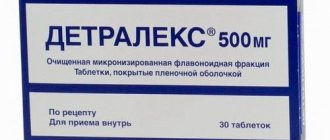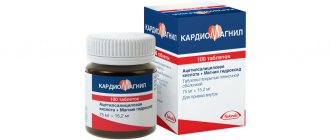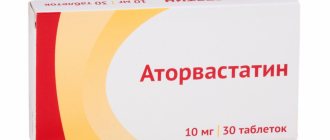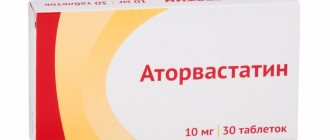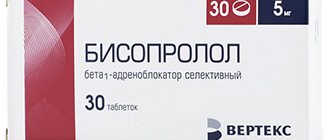Beta-agonists are effective in the presence of coronary heart disease, hypoglycemic coma, and bronchospasms. After entering the body, the components of the drug bind to beta-adrenergic receptors in the smooth muscles of the heart muscle, bronchi, uterus and vascular tissue.
The mechanism of action of this group of medications involves an effect on beta cells, due to which physiological processes are activated: the production of the hormone adrenaline and the neurotransmitter dopamine is stimulated.
After using beta-agonists, you can achieve an increase in blood pressure, an increase in the intensity of contraction of the heart muscle, and an improvement in bronchial conduction.
Physiological role of β-adrenergic receptors
Adrenaline is a universal adrenergic agonist, since it is responsible for stimulating all 4 subtypes of adrenergic receptors. Norepinephrine stimulates: 1, 2 and 1. 1-adrenergic receptors are under the control of dopamine. Additionally, this neurotransmitter stimulates its own dopaminergic receptors. Otherwise, the person’s condition gradually worsens.
Beta-adrenergic receptors are located in adipose tissue, the heart, and also in the renin-secreting cells that make up the juxtaglomerular apparatus of the nephrons of the kidneys. If they are excited, the heart begins to contract more often, and atrioventricular conduction increases.
All beta-agonists depend on cyclic adenosine monophosphate. As a result of the use of adrenergic stimulants in fatty tissue, the metabolic process of triglyceride breakdown is enhanced, thereby increasing the concentration of free fatty acids in the blood plasma.
Under such conditions, the kidneys synthesize renin (a protein-splitting enzyme) much better, resulting in the production of a peptide hormone and increased vascular tone. Beta adrenergic receptors are located in almost all organs. For example, in the heart, uterus, central nervous system, blood vessels.
Their stimulation allows you to gradually improve bronchial conductivity. B-adrenergic receptors increase the glucose level in the blood and reduce the tone of the uterus, which is very important during the period of bearing a child.
Classification
All drugs of the beta-2-adrenergic receptor group can be divided according to the selectivity of their action into β 2-adrenergic receptors. Non-selective drugs that, in addition to β 2 -adrenergic receptors, also act on β 1 -adrenergic receptors (including adrenergic receptors located in the myocardium, blood vessels and other organs), and have a short period of action, include isoprenaline, orciprenaline and hexoprenaline . Selective β 2 -agonists are divided according to the duration of action into short-acting drugs, which include salbutamol (as well as the levorotatory isomer of salbutamol - levosalbutamol), fenoterol and terbutaline. Long-acting β 2 -adrenergic receptors include salmeterol, formoterol, clenbuterol and bambuterol. There are also β 2 -adrenergic stimulants with ultra-trival action, the first representative of which is indacaterol.
What are B-adrenergic agonists?
The category of B-agonists includes various medications that are used in modern medicine to combat diseases of the cardiovascular system and respiratory tract. In the patient’s body, the components of the drug bind to beta receptors, a large number of which are found in the heart muscle, vascular tissue, and bronchial muscles.
Due to this, cell stimulation occurs and important physiological processes are activated. But it is prohibited to take such medications on your own , since an effective treatment regimen is selected for each patient individually.
With the use of B-agonists, tachycardia develops, which significantly reduces the likelihood of using these drugs to relieve bronchospasm. But selective beta-2 agonists have received huge demand in the treatment of bronchial asthma and other obstructive pulmonary diseases. For example, emphysema, chronic bronchitis.
What drugs belong to the group of B-adrenergic agonists?
Doctors often prescribe beta-agonists. Drugs belonging to this pharmacological group are divided into short- and fast-acting medications. In addition, there are drugs that have a selective effect only on certain organs. Some drugs act directly on B1 and B2 receptors. The most well-known medications from the group of beta-adrenergic agonists are the drugs “Salbutamol”, “Fenoterol”, “Dopamine”. β-agonists are used in the treatment of pulmonary and cardiac diseases. Also, some of them are used in the intensive care unit (the drug “Dobutamine”). Less commonly, drugs of this group are used in gynecological practice.
Mechanism of action in the body
Existing beta-agonists are divided into B1- and B2-agonists. When interacting with receptors, these drugs activate many physiological processes in the body.
Beta-agonists have the following properties:
- Increases blood pressure. This effect is due to stimulation of the RAAS.
- They improve the conductivity and automatism of the heart muscle (the ability to contract rhythmically without any visible irritation under the influence of impulses arising in the organ itself).
- Accelerate lipolysis. As a result of regular use of B1-adrenergic stimulants, fatty acids are formed in the patient’s blood.
- Increases the rhythm and strength of heart contractions.
All these changes in the patient’s body occur against the background of adrenergic stimulants binding to B1 receptors. They are found not only in the heart, blood vessels and fatty tissue, but also in the periglomerular cells of the kidneys.
Beta-adrenergic agonists, mechanism of action.
B2-adrenergic agonists have the following mechanism of action:
- They accelerate glycogenolysis in muscles, due to which skeletal muscles contract much faster.
- Improves bronchial conductivity. This effect is due to the gradual relaxation of smooth muscles.
- Glycogenolysis accelerates in liver cells, which increases the concentration of glucose in the blood.
- The uterine myometrium relaxes.
B-agonists have a wide range of applications. When used correctly, medications from this category can help get rid of the painful symptoms of diagnosed diseases, significantly improving the patient’s quality of life.
pharmachologic effect
β1-Adrenergic agonists stimulate β1-adrenergic receptors in the myocardium, which leads to an increase in the strength and frequency of heart contractions (and, as a consequence, cardiac output and blood pressure).
β2-Adrenergic agonists stimulate β2-adrenergic receptors in the bronchi, providing a bronchodilator (bronchodilator) effect, and also, due to stimulation of β2-adrenergic receptors of the uterus, have a tocolytic effect (relax the muscles of the uterus).
β3-Adrenergic agonists stimulate β3-adrenergic receptors in the bladder, relaxing its muscles and preventing urinary incontinence.
Advantages and disadvantages
Beta-adrenergic agonists (the mechanism of action of these drugs involves stimulation of beta cells in the human body, which has a positive effect on the functioning of internal organs) are sold in the form of solutions for intravenous administration and inhalation, powders, and tablets.
If the patient is prescribed inhalation, then only 20% of the total dose will reach the lungs. The dosage of the drug depends on the form of the diagnosed pathology and the patient’s condition.
B-adrenergic agonists have the following positive characteristics:
- Tones blood vessels.
- Beta-agonists may be prescribed to patients with low HDL cholesterol.
- Produces an anticoagulation effect.
- The drugs are highly effective when the content of triglycerides in the patient’s body is high.
- Stops the inflammatory process.
- Effective in the presence of metabolic syndrome.
- Fight free radicals.
Long-term treatment with B-adrenomimetics reduces the concentration of lipoproteins in the blood and also improves the condition of blood vessels.
Beta-agonists can provoke the development of adverse reactions, which is why before using the drug you need to make sure there are no contraindications.
Among the main disadvantages of this category of drugs is that they often cause vomiting, diarrhea, and flatulence in patients. In some cases, the emotional state may worsen, and depression may develop.
Classification of adrenergic agonists
All alpha and beta adrenergic agonists, according to the mechanism of action on synapses, are divided into substances of direct, indirect and mixed action:
| Type of medication | Operating principle | Examples of medicines |
| Selective (direct) adrenergic agonists | Direct-acting adrenergic agonists contain adrenoreceptor agonists, which have an effect on the postsynaptic membrane similar to endogenous catecholamines (adrenaline and norepinephrine). | Mezaton, Dopamine, Adrenaline, Noradrenaline. |
| Non-selective (indirect) or sympathomimetics | Non-selective agents act on the vesicles of the presynaptic membrane of the adrenergic receptor, by increasing the synthesis of natural mediators in it. In addition, the adrenomimetic effect of these drugs is due to their ability to reduce the deposition of catecholamines and inhibit their active reuptake. | Ephidrine, Phenamine, Naphthyzin, Tyramine, Cocaine, Pargyline, Entacapone, Sydnofen. |
| Mixed action | Mixed-type drugs are both adrenergic receptor agonists and mediators of the release of endogenous catecholamines in α and β receptors. | Phenylephrine, Metasone, Norepinephrine, Epinephrine. |
Classification of beta-agonists, types of medications
Beta-adrenergic agonists (the mechanism of action of drugs in this category allows one to cope with atrial fibrillation, which is the most complex form of cardiac arrhythmia) are usually divided into several groups.
There are 3 categories of B-agonists:
- Selective beta-1 adrenergic agonists. These drugs are in great demand in intensive care and cardiology departments.
- Non-selective beta-agonists.
- Selective B2-adrenergic agonists. Medicines from this category are in great demand in the fight against pathologies that affect the respiratory system. Drugs can have both a short and long-term principle of action.
Non-selective adrenergic stimulants are used in a short course to improve atrioventricular conduction and increase heart rate during bradycardia. Medications can achieve a positive inotropic effect. Some drugs are taken in a short course for acute heart failure, which is associated with myocarditis and myocardial infarction.
Uncontrolled use of drugs increases the likelihood of patient death.
To quickly eliminate attacks in chronic respiratory diseases, B-2 adrenergic agonists are used. Terbutaline or Fenoterol is administered intravenously to the patient to gradually reduce the intensity and frequency of contractions of the muscular structures of the uterus, when there is a high threat of premature birth.
Drugs in this category are often combined in one bottle with glucocorticosteroids to combat asthma.
Alpha adrenergic agonists
Alpha adrenergic agonists are represented by drugs that act mainly on alpha adrenergic receptors, and they can be selective (only on one type) and non-selective (acting on both α1 and α2 molecules). Norepinephrine, which also stimulates beta receptors, is considered a non-selective drug.
Selective alpha1-adrenergic agonists include mezatone, etilephrine, and midodrine. Drugs in this group have a good anti-shock effect by increasing vascular tone and spasm of small arteries, therefore they are prescribed for severe hypotension and shock. Their local use is accompanied by vasoconstriction; they can be effective in the treatment of allergic rhinitis and glaucoma.
Drugs that excite alpha2 receptors are more common due to the possibility of predominantly local use. The most famous representatives of this class of adrenergic agonists are naphthyzine, galazolin, xylometazoline, and visine. These drugs are widely used to treat acute inflammatory processes of the nose and eyes. Indications for their use include allergic and infectious rhinitis, sinusitis, and conjunctivitis.
Due to the rapid onset of the effect and the availability of these drugs, they are very popular as medicines that can quickly relieve such an unpleasant symptom as nasal congestion. However, you should be careful when using them, because with excessive and prolonged use of such drops, not only drug resistance develops, but also atrophic changes in the mucosa, which can be irreversible.
The possibility of local reactions in the form of irritation and atrophy of the mucous membrane, as well as systemic effects (increased pressure, changes in heart rhythm) does not allow their long-term use, and they are also contraindicated for infants, people with hypertension, glaucoma, and diabetes. It is clear that both hypertensive and diabetic patients still use the same nasal drops as everyone else, but they should be very careful. Special products are produced for children that contain a safe dose of adrenergic agonists, and mothers must ensure that the child does not get an excess amount of them.
Selective centrally acting alpha2-adrenergic agonists not only have a systemic effect on the body, they can pass through the blood-brain barrier and activate adrenergic receptors directly in the brain. Their main effects are:
- Reduce blood pressure and heart rate;
- Normalizes heart rate;
- They have a sedative and pronounced analgesic effect;
- Reduce the secretion of saliva and tear fluid;
- Reduce the secretion of water in the small intestine.
Methyldopa, clonidine, guanfacine, catapresan, and dopegit are widely used and are used in the treatment of arterial hypertension. Their ability to reduce salivary secretion, provide an anesthetic effect and soothe allows them to be used as additional drugs during anesthesia and as anesthetics during spinal anesthesia.
Indications for the use of B-adrenergic agonists
Beta-adrenergic agonists (the mechanism of action of medications due to a gradual increase in the tone of blood vessels allows one to achieve an anti-shock effect) of a non-selective principle of action are quite rarely used in modern medicine. Previously, these drugs were used to normalize heart rhythm and improve cardiac conduction.
But in laboratory conditions, specialists were able to determine that selective B-agonists are no less effective, but at the same time cause fewer adverse reactions. These medications are more practical to use, since the components they contain act only on the damaged organ.
Among the main indications for the use of beta-agonists are the following diseases and conditions:
- Hypoglycemic coma.
- Severe form of coronary heart disease (CHD).
- Inflammatory diseases of the mucous membrane of the visual apparatus and nose.
- Glaucoma.
- Acute heart failure.
- Collapse (a life-threatening condition characterized by a drop in blood pressure and deterioration of blood supply to vital organs).
- Shock of various etiologies, a drop in blood pressure to a critical level, sudden cardiac arrest.
- Bronchial asthma and other diseases of the respiratory system that are accompanied by bronchospasm.
- Conducting local anesthesia.
- Decompensated heart defects.
Short-term use of beta-2 adrenergic agonists by healthy people can achieve a short-term increase in physical endurance.
This effect is due to the fact that the components of medications improve the functioning of the bronchi, which makes it easier for the body to cope with stress. B2-agonists are often used by professional athletes (for example, cyclists).
Adrenergic agonists of indirect action
In addition to agents that directly bind to adrenergic receptors, there are others that indirectly have their effect by blocking the breakdown of natural mediators (adrenaline, norepinephrine), increasing their release, and reducing the reuptake of “excess” amounts of adrenergic stimulants.
Among the indirect adrenergic agonists, ephedrine, imipramine, and drugs from the group of monoamine oxidase inhibitors are used. The latter are prescribed as antidepressants.
Ephedrine is very similar in action to adrenaline, and its advantages are the possibility of oral administration and a longer lasting pharmacological effect. The difference lies in the stimulating effect on the brain, which is manifested by excitement and an increase in the tone of the breathing center. Ephedrine is prescribed to relieve attacks of bronchial asthma, hypotension, shock, and local treatment for rhinitis is possible.
The ability of some adrenergic agonists to penetrate the blood-brain barrier and have a direct effect there allows them to be used in psychotherapeutic practice as antidepressants. Widely prescribed monoamine oxidase inhibitors prevent the destruction of serotonin, norepinephrine and other endogenous amines, thereby increasing their concentration at the receptors.
Nialamid, tetrindole, and moclobemide are used to treat depression. Imipramine, which belongs to the group of tricyclic antidepressants, reduces the reuptake of neurotransmitters, increasing the concentration of serotonin, norepinephrine, and dopamine at the site of transmission of nerve impulses.
Adrenergic agonists not only have a good therapeutic effect in many pathological conditions, but are also very dangerous due to some side effects, including arrhythmias, hypotension or hypertensive crisis, psychomotor agitation, etc., therefore drugs of these groups should be used only as prescribed by a doctor. They should be used with extreme caution by persons suffering from diabetes mellitus, severe cerebral atherosclerosis, arterial hypertension, and thyroid pathology.
Contraindications
Beta-agonists cannot be used in all patients. Non-selective B-agonists have the most contraindications for use. These drugs may cause tremor, hyperglycemia, tachycardia, and central nervous system excitation.
The mechanism of action of B-agonists is based on stimulation of beta receptors, which allows to achieve tocolytic, bronchodilator and inotropic effects. Properly selected medications help reduce the intensity of the release of inflammatory mediators by mast cells and basophils, thereby increasing the lumen of the bronchi.
Beta-1 adrenergic agonists belong to the category of potent drugs, which is why only a qualified doctor can prescribe them. They are not used if the patient has subaortic stenosis, ventricular arrhythmia and pheochromocytoma. B1-agonists should not be used for cardiac tamponade.
Before using beta-2 adrenergic agonists, the following contraindications should be taken into account:
- Diabetes.
- Individual intolerance to beta-agonists.
- Children's age (up to 2 years).
- The presence of inflammatory processes in the myocardium.
- Heart rhythm disturbance.
- Pregnancy, which is complicated by placental abruption, internal bleeding, and the threat of premature birth.
- Thyrotoxicosis.
- Aortic stenosis.
- Kidney, liver failure.
- Arterial hypertension.
Beta-agonists are prescribed with caution to patients who are taking medications for dry cough. β-agonists should not be used in acute kidney disease (eg, aldosteronism).
Modern beta-2 adrenergic agonists are well tolerated by patients in 98% of all cases. Due to the reduced risk of adverse reactions and the possibility of reducing the minimum dosage, drug therapy can achieve good results in the fight against decompensated heart defects.
Pharmacokinetics
Most β 2 -adrenergic receptor drugs are well absorbed when administered orally, but the oral bioavailability of adrenergic stimulants is low due to the presence of a first-pass effect through the liver in the metabolism of these drugs. The main route of use of the group’s drugs is inhalation, in which, for various forms of use (via a nebulizer, inhalation of a dry powder or aerosol), the bioavailability of the drugs ranges from 5 to 38%. The exception is the ultra-trivalent drug indacaterol, whose bioavailability when administered in inhalation is 43%. Some of the drugs in the group are also used parenterally, mainly intravenously, and the bioavailability of the drugs is 100%. Drugs of this group bind poorly to plasma proteins (on average 14-25%). Most drugs from the β 2 -adrenergic receptor group create high concentrations in most body tissues, penetrate the placental barrier and are excreted into breast milk. Drugs of the group are metabolized mainly in the liver, as well as in other tissues of the body under the action of MAO enzymes and catechol-O-methyltransferase. The half-life of the drugs in this group varies from 2 minutes for isoprenaline to 24 hours for indacaterol. β 2 -adrenergic stimulants are excreted from the body both in urine and feces, partly in the form of inactive metabolites, partly in unchanged form.
Side effects
Beta-adrenergic agonists (the mechanism of action of drugs allows one to enhance the functioning of B-receptors of vascular walls and internal organs, which helps improve cardiac conduction) in isolated cases can worsen the patient’s condition. Most often this occurs as a result of non-compliance with the treatment regimen recommended by the attending physician.
B-adrenergic agonists can cause the following adverse reactions:
- Neurotoxic complications. As a result of the use of Ephedrine and Adrenaline, the patient may experience: insomnia, agitation, tremors of the limbs, acute headaches, discomfort in the heart area.
- Sudden vasoconstrictor action. A stroke, hypertensive crisis, acute heart failure with subsequent development of pulmonary edema may occur.
- Arrhythmogenic effect, which is fraught with various heart rhythm disturbances.
- Pupil dilation.
- Abnormal stool.
- Dry mouth.
- Development of allergic reactions.
- Nausea, vomiting.
If adverse reactions occur, the patient should stop taking the drug and seek advice from their doctor in order to choose a safer analogue.
Overdose
Cases of overdose with beta-agonists in medical practice are extremely rare. Due to a significant excess of the recommended dosage of the drug, the patient may experience the following symptoms.
Scroll:
- Nausea, vomiting.
- Diarrhea.
- Tachycardia.
- Worsening attacks of suffocation (lung closure syndrome).
- Headache.
- Hypokalemia.
- Increased sweating.
- Increased fatigue.
- Myalgia.
- Urinary retention.
- Confusion.
- Increased body temperature.
- Paradoxical bronchospasm.
- Chills.
- Coughing attacks.
- Itching and burning of the skin, Quincke's edema.
If the patient inadvertently took a large dose of the drug, then you need to rinse the stomach and take an effective sorbent (for example, activated carbon). To reduce the likelihood of deterioration in health, the patient should seek qualified help from the attending physician, who, if necessary, will prescribe symptomatic treatment.
Precautions and special instructions
Beta-agonists can be prescribed with caution to patients diagnosed with severe cardiovascular diseases, hyperthyroidism, prostatic hypertrophy and urinary tract obstruction. If a patient develops rapidly progressing shortness of breath, it is necessary to immediately seek medical help.
Symptomatic treatment may be more effective than regular use of B-agonists in those patients diagnosed with bronchial asthma or a moderate form of chronic obstructive pulmonary pathology. Additionally, increased anti-inflammatory therapy may be necessary to control airway inflammation.
In isolated cases, after using beta-agonists, patients are concerned about complications from the visual system. For example, an increase in intraocular pressure, the development of mydriasis and closed-angle glaucoma, acute pain in the eyeball. Such symptoms may occur after the drug comes into contact with the eyes.
To avoid negative consequences, the patient should carefully study the instructions before using beta-agonists in the form of aerosols.
If the patient has decreased visual acuity, pain in the eye and redness of the mucous membrane, then these symptoms may indicate an acute attack of angle-closure glaucoma. In this case, along with B-agonists, you need to use eye drops that will help narrow the pupil.
Before using the drug, you should consult an ophthalmologist. If the patient has a history of cystic fibrosis, then as a result of the use of beta-agonists, various disturbances in the functioning of the gastrointestinal tract may occur. In this case, the gastroenterologist will have to select a safe analogue.
Prohibited use by athletes
Some drugs from the group of beta-2 adrenergic receptors, namely salbutamol, salmeterol and formoterol, are prohibited for use by athletes during competitions by decision of the World Anti-Doping Agency as stimulants of the respiratory system, and clenbuterol also as a drug with an anabolic effect. And identification of these drugs in the body of athletes during competitions may cause their disqualification. But some athletes suffering from bronchial asthma have permission to use salbutamol, formoterol and salmeterol (but not clenbuterol) from the World Anti-Doping Agency.
List of drugs, dosage regimen, prices
Beta-agonists are in great demand in traditional medicine, as they are highly effective in the fight against cardiac and pulmonary pathologies.
Some drugs in this category are used in intensive care units. For example, Dobutamine. Various beta-agonists are in demand in gynecological practice.
Tablet forms of drugs
To combat bronchial asthma, cardiac crisis and other diseases, beta-agonists in the form of tablets for oral administration are often used. The treatment regimen and dosage depend on the patient's diagnosis and general condition.
| Drug name | Description | Average cost (RUB) |
| Salmo | Salbutamol is used as an active component. The drug is indicated for airway obstruction caused by bronchial asthma or chronic bronchitis. Adults and children over 12 years of age need to take the drug 2 tablets 3-4 times a day. The duration of treatment is determined individually. | 110 |
| Salbutamol | Salbutamol is added to the drug as the main active ingredient. The drug is indicated for all forms of bronchial asthma, reversible airway obstruction in chronic emphysema and bronchitis. Salbutamol is prescribed to pregnant women when there is a high risk of premature birth. It is recommended to take the drug 2-4 mg maximum 4 times a day. The duration of therapy is determined by the doctor. | 130 |
It is prohibited to use B-adrenergic agonists without prior examination and consultation with your doctor. Otherwise, the patient’s condition may worsen significantly, which will require more radical treatment.
Solutions for injections and inhalations
B-adrenergic agonists in the form of solutions with precise dosing are used to effectively relieve and prevent bronchospasm in chronic obstructive pulmonary disease and bronchial asthma. A large dosage of the drug is needed for pronounced swelling and inflammation of the mucous membrane of the respiratory tract.
| Drug name | Description | Average cost in Russia (RUB) |
| Astalin | Salbutamol sulfate is used as the active component. The drug is intended to prevent and relieve bronchospasm in bronchial asthma and emphysema. To obtain a positive therapeutic effect, adults and children over 12 years of age need to take 100-200 mcg of the drug (1-2 inhalation doses). The daily dosage of the drug should not exceed 1200 mcg. | 155 |
| Fenoterol | The active component of the solution is fenoterol. The drug is indicated for uterine hypertonicity, bronchial asthma, and spastic chronic bronchitis. In gynecology, the drug Fenoterol is prescribed to those women who are at risk of premature birth. When using the medicine by inhalation, the single dosage is 200 mcg. When administered intravenously, the initial dose should not exceed 50 mcg. The duration of treatment depends on the patient's condition. | 340 |
Before purchasing beta-agonists, you need to study the instructions and also consult with your doctor. In modern B2-agonists, the mechanism of action is associated with stimulation of beta-adrenergic receptors, due to which the bronchial muscles relax and the work of the heart muscle increases.
If you follow the recommended dosage and frequency of use of the drug, the likelihood of adverse reactions is virtually eliminated.
PsyAndNeuro.ru
The material was prepared jointly by the educational project “Psychiatry & Neuroscience” and the Clinic of Psychiatry and Narcology Doctor SAN.
We present to your attention comprehensive practical recommendations for psychopharmacotherapy for diseases of the respiratory system. The recommendations describe psychiatric symptoms often encountered in diseases of the respiratory system, their differential diagnosis, neuropsychiatric side effects of drugs for the treatment of diseases of the respiratory system, drug interactions, as well as the effectiveness and safety of psychotropic drugs in diseases of the respiratory system.
Asthma, chronic obstructive pulmonary disease (COPD), cystic fibrosis, tuberculosis, obstructive sleep apnea, vocal cord dysfunction, pulmonary embolism - all of these diseases may have symptoms that require psychopharmacological treatment. Most of these diseases (except for cystic fibrosis, or if the patient smokes) do not affect the metabolism of pulmonary or other drugs. The main thing is to avoid taking medications that suppress the activity of the respiratory center or otherwise negatively affect ventilation of the lungs.
Asthma:
Anxiety, depression, substance abuse (marijuana, crack cocaine), sleep disorders
COPD:
Anxiety, depression, nicotine addiction, cognitive decline, sleep disorders, sexual dysfunction, fatigue
Cystic fibrosis:
Depression, anxiety, eating disorders
Vocal cord dysfunction:
Anxiety, depression, conversion disorder
Hyperventilation syndrome:
Anxiety, depression, pseudoconvulsions
Sleep apnea:
Drowsiness, sleep disturbances, irritability, depression, cognitive decline
Tuberculosis:
Psychosis, sleep disturbances, substance abuse, cognitive impairment, fatigue, lethargy, mania, delirium
In all of these diseases, psychiatric symptoms often occur, requiring the prescription of psychotropic drugs. Diagnosis can be difficult because symptoms of respiratory diseases overlap with symptoms of mental disorders. In addition, a cyclical sequence of psychiatric and respiratory symptoms is common, making it difficult to determine the underlying cause of the condition in the presence of associated factors.
Anxiety
Shortness of breath, chest tightness and a feeling of suffocation are common in anxiety disorders and respiratory diseases. Somatic manifestations of anxiety may be caused by a comorbid anxiety disorder, anxiety in response to a respiratory disorder, or the respiratory disorder itself.
It is important, if possible, to carry out differentiated diagnostics; if the symptoms have a physiological basis (for example, hypoxia), then they need to be addressed regardless of the treatment of anxiety or in conjunction with this treatment. For example, with pulmonary embolism, shortness of breath and hyperventilation may occur in the absence of chest pain, which may be mistaken for a panic attack.
Anxiety disorders, especially panic disorder, must be considered in the differential diagnosis of vocal cord dysfunction. Anxiety disorders occur in nearly one in three patients with asthma presenting to primary care; Anxiety can trigger asthma attacks. Theophylline and many beta-agonists may cause or worsen anxiety. Anxiety often accompanies vocal cord dysfunction and pulmonary embolism. Anxiety disorders, especially panic disorder with agoraphobia, occur with increased frequency in patients with COPD.
Depression
Patients with asthma, COPD and cystic fibrosis are more likely to experience depressive symptoms than the general population. Diagnosing depression can be difficult in patients with chronic respiratory diseases because many symptoms overlap, such as fatigue, poor sleep, decreased ability to perform activities, weight loss, and anorexia. Tuberculosis may cause diagnostically confusing signs of depression, such as weight loss, lethargy, sleep disturbances, loss of interest in daily activities, and confusion.
Sleep disorders
Sleep disturbances can be caused by apnea, nocturnal cough, nocturnal asthma attacks, medication side effects, and comorbid anxiety or depression. More than 50% of COPD patients complain of sleep disturbances. Many patients with COPD have obstructive sleep apnea, leading to daytime sleepiness, insomnia, and very often irritability and depressive symptoms. These patients may experience significant difficulties with concentration, attention, and memory.
Cognitive deficit
Cognitive dysfunction is common in patients with COPD, even in those who do not have chronic hypoxia or hypercapnia. Patients with severe COPD may develop irreversible cognitive deficits and subclinical encephalopathy due to repeated episodes of hypoxia or chronic hypoxia. Oxygen therapy helps minimize cognitive deficits in patients with mild hypoxia. Cognitive deficits may have potentially reversible causes, such as hypercapnia or exacerbation of underlying cardiac disease.
Drugs used in the treatment of diseases of the respiratory system often cause neuropsychiatric side effects.
Anticholinergics
Atropine: Paranoia; tactile, visual and auditory hallucinations; memory loss; delirium; agitation
Beta-agonists
Salbutamol, levosalbutamol: Anxiety, insomnia, paranoia, hallucinations, tremors, rapid heartbeat
Formoterol, arformoterol: Insomnia, anxiety, tremor, rapid heartbeat
Isoproterenol: Anxiety, insomnia, tremor
Metaproterenol: Anxiety, insomnia
Pirbuterol: Anxiety, tremors
Salmeterol: Anxiety, tremors, rapid heartbeat
Bronchodilators
Aminophylline, theophylline: Anxiety, insomnia, tremor, restlessness, withdrawal syndrome, hyperactivity, psychosis, delirium, mutism
Oral corticosteroids
Prednisone, prednisolone, dexamethasone: Depression, mania, emotional instability, anxiety, insomnia, psychosis, hallucinations, paranoia, personality changes
Leukotriene inhibitors
Montelukast: Fatigue, asthenia, suicidal ideation
Adrenergic agonists of mixed action
Adrenaline: Anxiety, tremors, psychosis
Phenylephrine: Depression, hallucinations, paranoia
Phenylpropanolamine: Restlessness, anxiety, insomnia, psychosis, hallucinations, aggressiveness
Other drugs
Acetazolamide: confusion, feeling unwell
Modafinil: Nervousness, depression, anxiety
Corticosteroids
Inhaled corticosteroids rarely produce side effects, but oral corticosteroids (eg, prednisone, prednisolone, dexamethasone) may cause depression, mania, emotional lability, anxiety, insomnia, psychosis, hallucinations, paranoia, and personality changes.
Bronchodilators
The most common side effects of beta-adrenergic bronchodilators include nervousness and tremor. Albuterol may cause insomnia. Over-the-counter inhalers containing epinephrine or ephedrine can cause anxiety and, if taken in large doses, psychosis.
Adrenergic agonists of mixed action
Mixed-action adrenergic agonists are often used for asthma. Epinephrine, ephedrine, phenylephrine and phenylpropanolamine can cause anxiety, insomnia, tremor and psychosis.
Theophylline
Theophylline can cause increased neuro-reflex excitability, insomnia, anxiety, restlessness and irritability, which can be mistaken for a primary anxiety disorder or akathisia. Symptoms caused by theophylline are usually dose dependent and develop soon after taking the drug. Treatment involves reducing the dose to the lowest effective dose, changing the timing of administration, and/or switching to other asthma medications. A patient with anxiety may be able to avoid oral theophylline by using inhaled cromoglycic acid, ipratropium bromide, or steroids.
The toxic effects of theophylline include severe anxiety, severe nausea, headache, insomnia, and can cause delirium with severe agitation and psychosis. Theophylline should be discontinued until symptoms subside and blood test values return to the therapeutic range. Theophylline can cause and worsen tremors. If theophylline cannot be stopped, beta blockers or benzodiazepines can be used against tremor. Although beta blockers have relative contraindications in COPD and asthma due to their bronchoconstrictor effect, beta blockers with high cardioselectivity such as acebutolol, atenolol, celiprolol, metoprolol and practolol can be prescribed to patients with mild to moderate reactive airway disease, and also for patients with COPD.
Antibiotics and anti-tuberculosis drugs
Antibiotics used to treat infections associated with asthma or COPD usually produce minimal side effects. At the same time, taking anti-TB drugs is associated with more frequent and severe side effects, including depression, anorexia, anxiety, insomnia, delusions, hallucinations and toxic psychosis.
Anticholinergic drugs
Atropine, an anticholinergic drug that is rarely used to treat asthma, can cause paranoia, tactile, visual and auditory hallucinations, memory loss, delirium and agitation. Inhaled ipratropium bromide and tiotropium bromide are anticholinergic drugs that do not cause significant psychiatric side effects.
Leukotriene inhibitors
Montelukast may cause dizziness, fatigue, asthenia, and suicidal ideation, although it is not associated with an increase in suicide attempts. Another leukotriene inhibitor, zafirlukast, does not appear to cause significant psychiatric side effects.
Drugs for the treatment of obstructive sleep apnea
Taking acetazolamide may cause confusion and feelings of illness. Modafinil, approved in the US as a treatment for daytime sleepiness, can cause nervousness, depression and anxiety.
For the most part, respiratory diseases do not affect pharmacokinetics, but there are two important exceptions: cystic fibrosis and smoking. Cystic fibrosis may alter pharmacokinetics due to impaired transport function of the cell membrane. The rate of absorption of the drug slows down, but the degree of absorption usually does not change, and the bioavailability remains the same. This does not affect the volume of distribution in any way. Cystic fibrosis increases oxidative hepatic metabolism, but only for the drug substrates cytochrome P450 (CYP) 1A2 and 2C8; metabolism by other cytochromes remains unchanged. There are few scientific studies on the use of lithium in patients with cystic fibrosis and the available data are contradictory. There are reports that renal clearance is reduced, resulting in higher lithium levels. At the same time, a clinical case was described in which the lithium level did not change. It is prudent to begin treatment with lithium in patients with cystic fibrosis at low doses and monitor their condition closely.
Smoking, in addition to causing diseases of the respiratory system, affects the pharmacodynamics and pharmacokinetics of many drugs. Smoking causes bronchoconstriction, which interferes with treatment and weakens the effect of taking bronchodilators. Smoking induces CYP1A2, which increases the metabolism of substrates of this hepatic enzyme, including clozapine, olanzapine, duloxetine and theophylline.
Psychotropic drugs for diseases of the respiratory system
Antidepressants
Antidepressants are often used to treat anxiety and depression in patients with chronic respiratory diseases. Most published studies have focused on the use of these drugs in patients with asthma and COPD; There is virtually no information on the use of antidepressants in patients with cystic fibrosis or tuberculosis, and little data has been collected on the use of antidepressants in patients with obstructive sleep apnea.
When treating patients with severe forms of COPD or obstructive sleep apnea, special care must be taken when combining sedating antidepressants with other sedatives, such as anxiolytics and hypnotics; sedative effects can lead to a weakening of the activity of the respiratory center. Very few studies have been conducted to evaluate the safety and effectiveness of antidepressants in patients with pulmonary disease, and therefore their safety can only be inferred from the lack of published reports of dangerous reactions.
It was previously thought that anticholinergic drugs were contraindicated in bronchospastic conditions, but tiotropium bromide is now often used? inhaled anticholinergic agent. Thus, although data are still limited, it can be assumed that the anticholinergic effect of a tricyclic antidepressant may reduce bronchoconstriction. It can also be expected that the drying effect of anticholinergic TCAs will be beneficial for asthma patients with heavy fluid secretions, but will worsen the condition in patients whose airways are clogged with thickened mucus. TCAs should not be prescribed to patients with cystic fibrosis because the anticholinergic drying effect will increase difficulty clearing mucus.
Apart from drug interaction issues, the use of antidepressants in patients with tuberculosis is safe. There are no studies examining the use of monoamine oxidase inhibitors in the setting of respiratory disease, but these drugs are known to be associated with serious drug interaction problems.
Benzodiazepines
The inhibitory effect of benzodiazepines on respiratory activity can significantly impair the response of pulmonary ventilation. This may lead to the development of respiratory failure in patients with limited respiratory reserve, so benzodiazepines are contraindicated in hypercapnia. Patients with severe bronchitis, severe restrictive pulmonary disease, or sleep apnea are most susceptible to the adverse effects of benzodiazepines.
At the same time, benzodiazepines are not contraindicated in COPD and asthma. Worsening anxiety often has a negative impact on the respiratory system, and in such cases, benzodiazepines improve the condition of patients with asthma or emphysema. In contrast, in patients with obstructive sleep apnea, benzodiazepines suppress respiratory activity, which can increase the duration of apnea episodes and lead to dangerous consequences.
Benzodiazepines help with severe episodes of vocal cord dysfunction. When prescribing benzodiazepines, it is best to use reduced doses of shorter-acting drugs (for example, lorazepam) so that side effects are mild and disappear quickly after stopping use.
Other anxiolytics and hypnotics
Some nonbenzodiazepine drugs are useful for improving sleep in patients with respiratory diseases. Zolpidem helps patients with severe obstructive sleep apnea fall asleep without compromising the effectiveness of CPAP therapy. In addition, it does not worsen respiratory performance and pulmonary function tests in patients with COPD. In patients with mild to moderate sleep apnea, zopiclone improves sleep without impairing breathing. The effectiveness of trazodone in this group of patients has not been studied.
The drug of choice in patients with respiratory diseases suffering from chronic anxiety should be buspirone due to the fact that it does not have a depressant effect on breathing. Buspirone may improve respiratory status in patients with sleep apnea, exercise capacity, and shortness of breath in patients with chronic lung disease. There is evidence that buspirone is effective and well tolerated in combination with bronchodilators.
The use of barbiturates should be avoided in patients with respiratory impairment, severe COPD, or obstructive sleep apnea who are experiencing alcohol withdrawal. An exception may be long-term treatment of epilepsy with phenobarbital.
Antipsychotics
Although studies are small, clinical experience suggests that atypical and typical antipsychotics can be used in patients with respiratory disorders, with certain precautions regarding how extrapyramidal symptoms, weight gain, and tardive dyskinesia affect respiratory function and risk of aspiration pneumonia in elderly patients with dementia.
Laryngeal dystonia, manifested as acute shortness of breath, is an extremely rare form of acute dystonic reaction. It is usually associated with high-potency typical antipsychotics, but there are case reports with ziprasidone. Typically, this, like other dystonic reactions, occurs within 24-48 hours of starting antipsychotic therapy or, in rare cases, after increasing the dose. Laryngeal dystonia can be life-threatening, but usually resolves completely with intramuscular injection of anticholinergic drugs. Tardive dyskinesia affecting the respiratory muscles is a rare phenomenon that usually occurs with long-term use of typical antipsychotics and can lead to significant deterioration in breathing in patients with reduced tidal volume.
Weight gain while taking olanzapine, quetiapine, and other atypical antipsychotics is particularly problematic in patients with obstructive sleep apnea; additional weight worsens apnea. In addition, increased body weight may lead to decreased tidal volume in patients with impaired respiratory function, especially those with restrictive pulmonary disease. There is evidence that olanzapine and possibly risperidone may be associated with an increased risk of pulmonary embolism.
Patients taking atypical antipsychotics have a significantly increased risk of death from asthma. The risk is especially high in patients who have recently stopped taking antipsychotic medications. Patients with asthma and COPD are at increased risk of arrhythmia. If an antipsychotic must be prescribed, it is best to avoid the use of those drugs most likely to cause QT prolongation (ziprasidone, thioridazine), or, otherwise, carefully monitor the patient's condition. Abruptly stopping antipsychotics with significant anticholinergic effects, such as clozapine, may cause cholinergic rebound syndrome, which reduces the effectiveness of anticholinergic drugs for treating asthma. These medications should be discontinued slowly to prevent cholinergic rebound syndrome.
The use of antipsychotics in the treatment of older patients with dementia is associated with an increased risk of death from cardiovascular complications and infection, particularly pneumonia. Pneumonia in such cases may be associated with aspiration of secretions resulting from sedation and dysphagia.
Mood stabilizers
Several case reports suggest that carbamazepine is associated with pulmonary eosinophilia, diffuse parenchymal lung disease, and respiratory failure. Carbamazepine has also been found to be an effective treatment for asthma.
Psychostimulants
Chronic diseases of the respiratory system often lead to insomnia and daytime sleepiness. There is little research on the use of stimulants in patients with sleep apnea. Modafinil (and also armodafinil, the R-enantiomer of modafinil) increases daytime wakefulness when used as an adjunctive treatment in patients with obstructive sleep apnea who improve with CPAP therapy but still experience daytime sleepiness. Concentration and functioning are improved while sleep architecture remains unaffected. Atomoxetine improves the quality of wakefulness in patients with mild to moderate obstructive sleep apnea without worsening the index of respiratory events. However, since this topic remains poorly researched, and also because of the increased risk of arrhythmia in chronic diseases of the respiratory system, the use of psychostimulants should be treated with caution.
Antidementia drugs
The use of cognitive enhancers in patients with respiratory diseases has been poorly studied. Cholinesterase inhibitors increase acetylcholine levels and may cause bronchoconstriction. In addition, they are likely to block the therapeutic effect of bronchodilators, especially anticholinergic agents such as ipratropium bromide and tiotropium bromide. The most common pulmonary side effects of these drugs are shortness of breath and bronchitis, while uncommon side effects include pneumonia, hyperventilation, pulmonary edema, wheezing, hypoxia, pleurisy, pulmonary collapse, sleep apnea, and snoring.
Thus, cholinesterase inhibitors should be prescribed with caution, or better not at all, in patients with asthma and COPD. An alternative is memantine, which does not produce respiratory side effects.
Opioids
When dyspnea in patients with advanced pulmonary disease cannot be controlled, a variety of pharmacological agents, including opioids, are used. COPD studies show that opioids have a beneficial effect on shortness of breath, and are better when administered orally or parenterally than when administered inhaled. Harmful effects on arterial blood gases and oxygen saturation have not been demonstrated. Low-dose oral or parenteral opioids are used to treat dyspnea in end-stage pulmonary disease.
Sedative-hypnotics and morphine are often prescribed to patients with end-stage pulmonary disease. Although these drugs have been shown to be effective, when prescribing them, the benefits of comfort must be weighed against the risk of potential shortening of life due to respiratory depression. Opioids (usually morphine) and sometimes benzodiazepines are used to remove ventilators in terminal conditions.
Some psychotropic drugs adversely affect lung function. The most common cause of respiratory depression is the use of sedatives, hypnotics and opioids. There are reports that methylphenidate causes shortness of breath, asthma, pulmonary infiltrate, idiopathic pulmonary fibrosis, respiratory failure and pulmonary vascular disease. Carbamazepine can cause cough, shortness of breath, pulmonary infiltration, and idiopathic pulmonary fibrosis. Benzodiazepines may cause coughing. A case of acute pulmonary edema following an overdose of phenothiazine has been described. Typical and atypical antipsychotics are associated with pulmonary embolism. In addition, high-potency antipsychotics such as haloperidol are associated with laryngeal dystonia and tardive dyskinesia of the respiratory muscles, causing respiratory distress. Overdose of trazodone can cause eosinophilic pneumonia and respiratory failure. TCAs have been associated with Loeffler's syndrome (eosinophilic pneumonia), and overdose can lead to pulmonary edema and subsequent respiratory distress syndrome. Isolated cases of eosinophilic pneumonia have been reported while taking other antidepressants, but this appears to be an extremely rare occurrence.
Drugs prescribed for chronic diseases of the respiratory system may enter into pharmacokinetic and pharmacodynamic interactions with psychotropic drugs.
It is important to note that smoking, which is a cause or one of the factors in the development of various diseases of the respiratory system, can enhance the metabolism of psychotropic substances by inducing CYP 1A2, 2B6 and 2D6. These substances include benzodiazepines, zolpidem, antipsychotics (aripiprazole, quetiapine, risperidone, and ziprasidone are important exceptions), and antidepressants, including fluvoxamine, duloxetine, TCAs, and mirtazapine. After reducing or stopping smoking, it may be necessary to reduce the dose of psychotropic drugs whose metabolism has been induced.
Many anti-infectives, including macrolides, fluoroquinolones and antifungals (miconazole, ketoconazole, fluconazole, voriconazole, itraconazole, posaconazole, etc.) are potent inhibitors of one or more of the CYP isoenzymes, and rifamycins, such as rifampicin, induce several CYP enzymes. Taking anti-infective drugs may cause psychotropic drug toxicity or lead to loss of therapeutic effect if the psychotropic drug is not adjusted accordingly.
Taking isoniazid, a weak MAOI, together with TCAs, SSRIs, SSRIs and MAOIs can be dangerous due to the risk of hypertensive crisis and serotonin syndrome. When isoniazid alone is taken, its action as an MAOI does not require changes in diet, but if it is combined with antidepressants, it is necessary to limit the consumption of products with tyramine. Patients taking isoniazid should not be prescribed sympathomimetics such as epinephrine, ephedrine, and pseudoephedrine, which are often included in over-the-counter cold, cough, and sinusitis medications, and oral beta-agonists should be used with extreme caution. Inhaled beta-agonists appear to be safer due to their lower systemic absorption. SSRIs and SSRIs are safely combined with selective beta2-agonists (terbutaline, metaproterenol, albuterol, isoetarine).
Theophylline may decrease the levels of alprazolam and possibly other benzodiazepines and reduce their therapeutic effect, causing anxiety and insomnia. Theophylline may increase the clearance of lithium; When taking these drugs concomitantly, lithium levels should be monitored.
Some psychotropic drugs, including TCAs, low-potency antipsychotics, and anticholinergic modifiers of extrapyramidal symptoms, produce anticholinergic effects that may enhance the bronchodilator effects of atropine and inhaled anticholinergic bronchodilators such as ipratropium bromide and tiotropium bromide.
Drugs for the treatment of diseases of the respiratory system may enter into pharmacokinetic interactions with psychotropic drugs. Fluvoxamine inhibits CYP1A2 and may significantly increase theophylline levels. Carbamazepine and phenobarbital significantly reduce the blood levels of many drugs, including theophylline and doxycycline. St. John's wort also induces CYP1A2 and may reduce theophylline levels to subtherapeutic levels.
The material was prepared jointly by the educational project “Psychiatry & Neuroscience” and the Clinic of Psychiatry and Narcology Doctor SAN.
Translation: Filippov D.S.
Editor: Kasyanov E.D.



